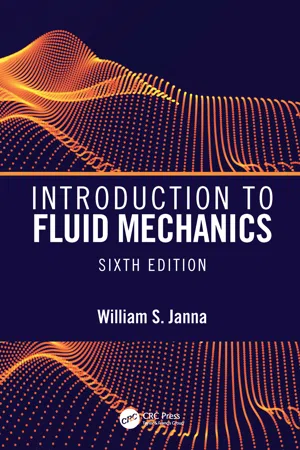Technology & Engineering
Nondimensionalization
Nondimensionalization is a technique used to simplify and analyze complex systems by removing units of measurement. It involves scaling variables to eliminate physical dimensions, making equations easier to work with and allowing for generalization across different systems. By removing specific units, nondimensionalization helps identify key parameters and relationships, making it a valuable tool in engineering and scientific research.
Written by Perlego with AI-assistance
Related key terms
Related key terms
1 of 4
Related key terms
1 of 3
5 Key excerpts on "Nondimensionalization"
- eBook - ePub
Dimensional Analysis
Practical Guides in Chemical Engineering
- Jonathan Worstell(Author)
- 2014(Publication Date)
- Butterworth-Heinemann(Publisher)
We use the concepts of Dimensional Analysis in a variety of ways. We use the concept of dimensional homogeneity as a check on our algebraic manipulations. If a physical equation involves apples and we finish with “orpels,” then we know we have made an incorrect algebraic manipulation in our study. We also use Dimensional Analysis to develop self-consistent systems of units and to establish the conversion factors between those systems of units.As mentioned several times previously, aeronautical, civil, and mechanical engineers have used Dimensional Analysis quite successfully to obtain functional solutions to problems too complex for derivation of an analytic solution. The problems these engineering disciplines have solved using Dimensional Analysis involve the smallest possible set of fundamental dimensions and a small number of variables. Some heat transfer problems have been resolved using Dimensional Analysis. Fewer such solutions exist because they involve a more complex set of fundamental dimensions and a larger number of variables. Chemical processes are so complex that few attempts have been made to use Dimensional Analysis to analyze them. This situation will change in light of free-for-use matrix calculators on the Internet.Once we have a functional solution developed from Dimensional Analysis, we can use it to gain physical insight about the problem. For example, using a functional solution, we can generate experimental data identifying the controlling regimes of the mechanism or process.Dimensional Analysis provides us with a tool for designing experimental programs. By grouping dimensional variables into dimensionless parameters, we can reduce the number of independent variables, thereby reducing the number of experiments required to define a mechanism or process. Using dimensionless parameters also allows us to succinctly present the results of a given experimental program.Lastly, Dimensional Analysis provides a firm, logical foundation for the theory of models. Thus, Dimensional Analysis provides us with a method for upscaling or downscaling complex mechanisms or processes. - eBook - ePub
- Kenneth J. Valentas, J. Peter Clark, Leon Levin(Authors)
- 2020(Publication Date)
- CRC Press(Publisher)
11 Dimensional Analysis I. Introduction Dimensional analysis is a useful and powerful tool for solving scale-up problems. Dimensional analysis is the method of reducing the equations that describe a process into a form containing no reference to units of measurement, that is, a dimensionless form. By its very nature, dimensional analysis gives a relationship between the independent and dependent variables that is independent of scale. As a consequence, the analysis of a problem through dimensional analysis, if it is possible, will inevitably lead to a solution of the scale-up problem. At the very least, a dimensional analysis will lead to a clearer understanding of the problem. Unfortunately, there is a large class of problems, associated with the scale-up of food processes, to which dimensional analysis cannot be applied: the analysis of the effect of process variables on most product qualities. This conclusion may be simply summarized by saying there is no succinct definition of a dimensionless variable for flavor or texture. 1 The literature (8,31,34,56), although it does not discuss the type of properties with which the food technologist normally deals, states the problem as the inability of dimensional analysis to deal with attributes lacking the property of absolute significance of relative magnitude. The most common example of this is the use of the Celsius or Fahrenheit scales of temperature, instead of the absolute Kelvin or Rankine scales. There is no problem when dealing with temperature differences. A better example of lacking the property of absolute relative magnitudes is the hardness scales that are used to describe materials. The common Mohs scale, which assigns a value of 10 to a diamond and a value of 1 to talc, does not mean that diamonds are 10 times harder than talc particles. Similarly, a grade of 10 on an orgaoleptic scale does not imply that the product tastes 10 times better than a product that was assigned a grade of one - eBook - ePub
- Dov M. Gabbay, Paul Thagard, John Woods(Authors)
- 2011(Publication Date)
- North Holland(Publisher)
Only knowledge of the relevant variables and their dimensional representation is required. 9 Although dimensional analysis is now used much less in chemical engineering than it was a few decades ago, 10 it is of interest because it involves a large number of reticulated models or ceteris paribus assumptions from the most “fundamental” to the most “applied” kinds. Moreover, though the number of models for which numerical solutions can be given of the governing equations under the prevailing boundary conditions has increased substantially, this doesn't mean that dimensionless numbers are disappearing from chemical engineering science and practice. In fact, new dimensionless numbers are still being added. 11 9 This section and the next is a slightly revised version of van Brakel [2000, § 7.2], where more references to the original literature can be found. 10 For a comprehensive inventory of dimensional analysis applications in chemical engineering see Dobre and Sanchez Marcano [2007]. For applications in other disciplines see [Palacios, 1964] and [Sedov, 1959]. 11 Nowadays one may find proposals for dimensionless number correlations which are valid for just one type of equipment (i.e. a particular design for a particular unit operation). The method of dimensional analysis has its origin in the principle of similitude already referred to by Newton. Fourier was the first to apply the geometrical concept of dimension to physical quantities. Maxwell expressed the requirement of dimensional homogeneity more precisely. Lord Rayleigh made extensive use of the method of dimensional analysis. Between 1890 and 1920 the “method of dimension” or the “procedure of dimensional analysis” was further developed. In its final form it can be summarised as follows [ Bridgman, 1922 ]. Using previous experience, decide on the general nature of the problem, including a judgement about which systems may be considered as similar in the relevant sense (see previous section) - eBook - ePub
- William S. Janna(Author)
- 2020(Publication Date)
- CRC Press(Publisher)
Measurements on the model can then be scaled up to predict performance of the prototype even though the prototype has not been built. Clearly, the cost is considerably less. Modeling wind flow past a building, for example, is an economical way of finding the effect of a hurricane on the structure. Thus, modeling problems have many useful applications. In this chapter, we will see how dimensionless ratios are used in modeling problems. 4.1 DIMENSIONAL HOMOGENEITY AND ANALYSIS An equation must be dimensionally homogeneous. That is, all terms in the equation must have the same dimensions or units. To compare dimensions of various terms within an equation, it is convenient to first convert the dimensions into fundamental units. Suppose we are working within the British gravitational system, in which force (F), length (L), and time (T) are considered fundamental. Mass (M) is a derived unit defined as M = F · T 2 / L. Consider, for example, the Bernoulli equation, derived in Chapter 3 : p ρ + V 2 2 + g z = a constant If we use the generalized notation, the dimensions of each term become p ρ = F L 2 L 3 M = F L 2 L 3 L F ⋅ T 2 = L 2 T 2 V 2 2 = L 2 T 2 g z = L T 2 L = L 2 T 2 Thus, each term has dimensions of L 2 / T 2 in a system in which F, L, and T dimensions are considered fundamental (British gravitational system). On the other hand we could reformulate the dimensions of the Bernoulli equation in the system in which only mass (M), length (L), and time (T) are fundamental (SI system). Force is a derived unit defined as F = M · L / T 2. Evaluating the Bernoulli equation in this system, we get p ρ = M ⋅ L T 2 1 L 2 L 3 M = L 2 T 2 V 2 2 = L 2 T 2 g z = L T 2 L = L 2 T 2 In Chapter 1, we discussed the English engineering system, in which force, mass, length, and time are considered fundamental. In this system, equations are often written with a conversion factor because mass and force are both considered fundamental - eBook - ePub
The Constants of Nature
A Realist Account
- Peter Johnson(Author)
- 2019(Publication Date)
- Routledge(Publisher)
h, or any other derived quantity, behave like a fundamental quantity with its own dimension, does not make it one. To assume it does, is to confuse the “primary/secondary quantity” distinction with the “fundamental/derived quantity” distinction.If we measured one of the derived quantities in the expression for a specifically, α would no longer be dimensionless. In fact we could use specific measures for each of the derived quantities to obtain the following dimensions for α:We concur with Sedov:[2e 2][Є 0]− 1[ h ]− 1[ c ]− 1The concepts of dimensional and non-dimensional quantities are therefore relative. Each quantity is measured in certain units. When these units of measurement are identical in all systems the corresponding quantities are called non-dimensional. Dimensional quantities are defined as those for which the units of measurement can vary in experimental or theoretical investigations. Here it is irrelevant whether or not the investigations are actually carried out. It follows from this definition that certain quantities can be considered dimensional in some cases and non-dimensional in others. (Sedov 1959 p. 3)While not significant philosophically, the fact that certain quantities are dimensionless is very useful for the presentation of data, computation etc. This usefulness was designed in from the beginning, however, and arises from the choices we make of reference quantities, the particular form of equations and the П theorem. It ought to be no surprise that a is dimensionless given the application of the П theorem to the equations used to describe atomic systems and our choice of mass, length and time as reference quantities. The application of the П theorem produces a as a dimensionless п term.All four categories of constants identified so far have subordinate status: they are either of limited generality, computational or formulaic abbreviations or ratios. Commitment to them does not disturb our starting ontological neutrality. The existence of such constants is a contingent consequence of the existence of more basic categories of constants from which they are derived.
Index pages curate the most relevant extracts from our library of academic textbooks. They’ve been created using an in-house natural language model (NLM), each adding context and meaning to key research topics.
Explore more topic indexes
Explore more topic indexes
1 of 6
Explore more topic indexes
1 of 4




